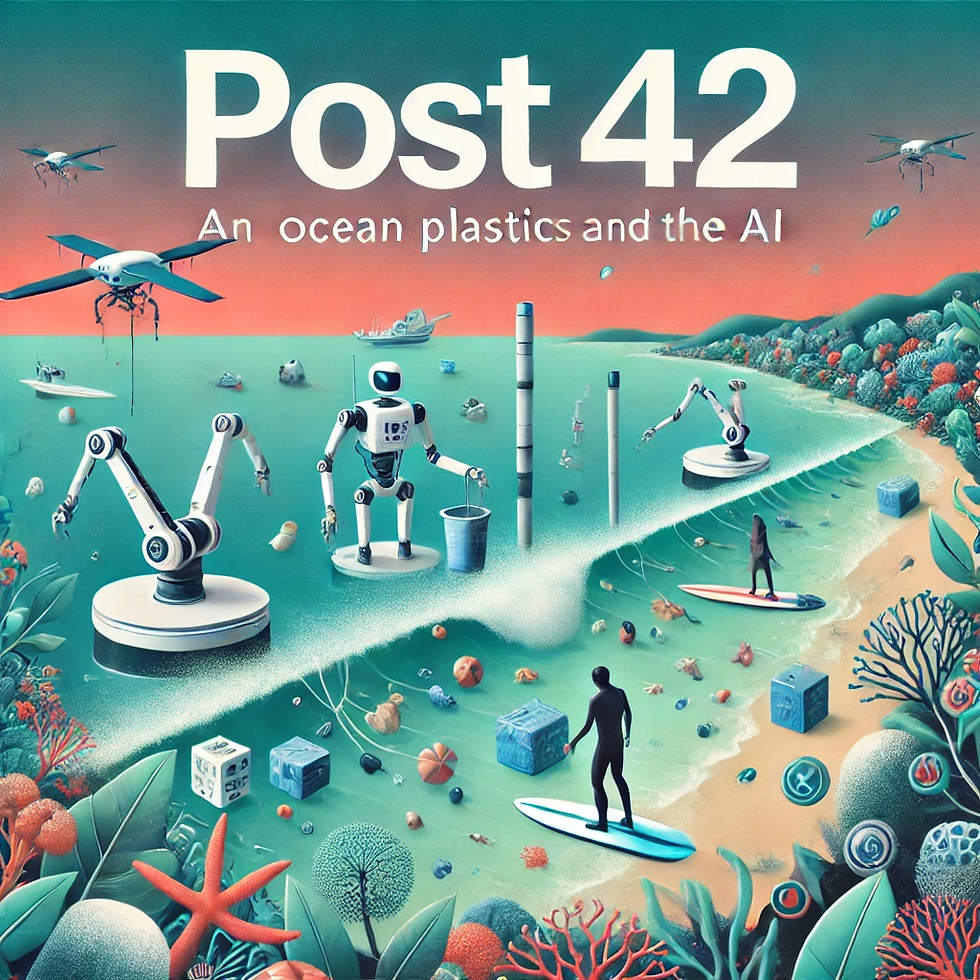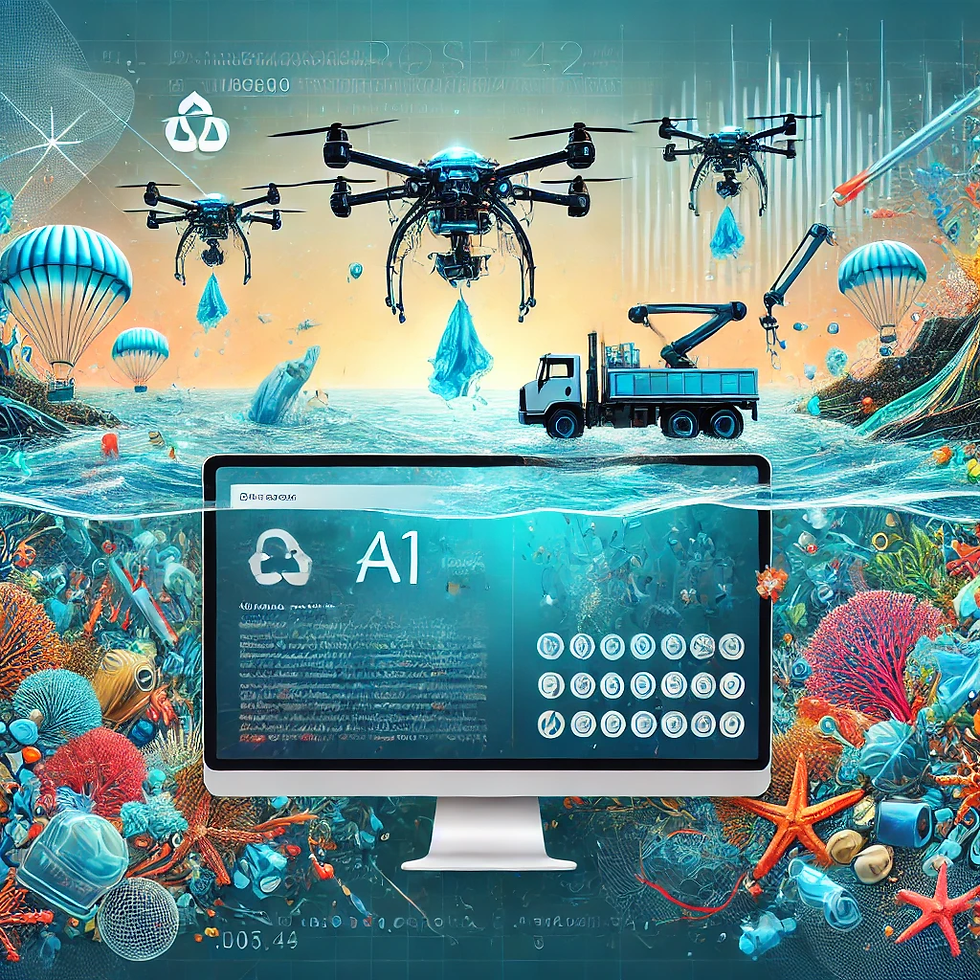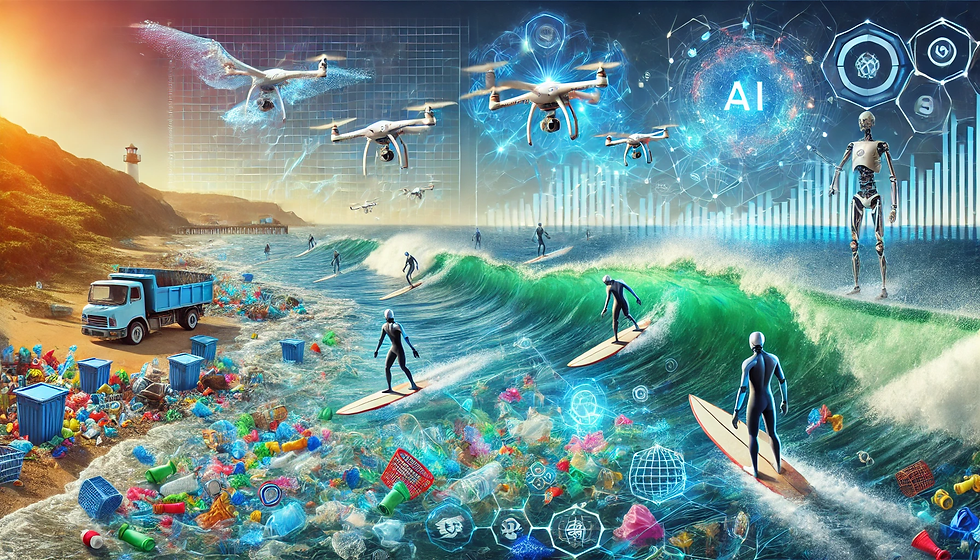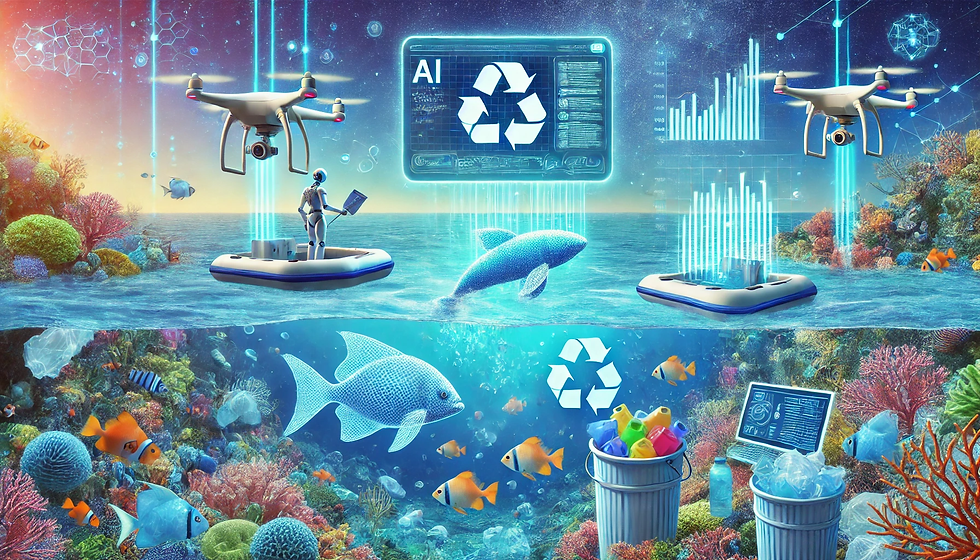Post #42: Ocean Plastics and AI - part 2
- henry belfiori
- Nov 29, 2024
- 5 min read
Hello Hello Hello
Here is part 2 of this fascinating topic. Hope you find the reading fruitful and remember to never stop learning.

In Part 1 of this series, we explored the broader role of AI in combating ocean plastic pollution, from detection to recycling. Now, in Part 2, we focus on the nuts and bolts: the technical applications of AI in specific systems designed to tackle ocean plastics. These systems go beyond conceptual potential, showcasing real-world technologies that use advanced AI methods to identify, monitor, and manage plastic pollution at scale. Let’s dive into how AI powers satellite monitoring, drones, robotics, and recycling systems to address this global crisis.
AI in Satellite Monitoring Systems
Satellites provide a powerful vantage point for understanding the scale of plastic pollution in oceans, and AI makes this data actionable by detecting and mapping plastic waste across vast areas.
How it Works
Machine learning algorithms process multi-spectral satellite imagery to distinguish floating plastics from natural debris like seaweed, foam, or even algal blooms. Neural networks trained on extensive labeled datasets analyse colour, shape, and reflectance properties, enabling precise identification of plastic debris.
Technical Mechanisms
Neural Networks: Convolutional Neural Networks (CNNs) analyse multi-spectral data for pattern recognition and classification of plastic waste.
GIS Integration: Geographic Information Systems (GIS) overlay AI-driven insights with geospatial data to map pollution hotspots globally.
Data Fusion: Combining satellite data with oceanographic models enhances accuracy in predicting debris movement, leveraging variables like wind patterns and currents.
Use Case
AI-powered satellite systems, such as those used in mapping the Great Pacific Garbage Patch, allow near real-time monitoring of plastic waste. These systems provide critical data for directing cleanup efforts and informing policymakers.

Drone and Autonomous Vehicle-Based Detection
Drones and Autonomous Underwater Vehicles (AUVs) equipped with AI systems bring precision and flexibility to identifying plastic waste in coastal and underwater environments. These technologies excel in areas where satellite imaging is less effective, such as close to shorelines or beneath the water’s surface.
How it Works
AI-powered drones and AUVs use real-time visual recognition systems to detect and classify plastic waste. Deep learning algorithms analyse video feeds and high-resolution images captured during their missions, identifying plastic debris with exceptional accuracy.
Technical Mechanisms
Object Detection Frameworks: AI models like YOLO (You Only Look Once) and Faster R-CNN enable the rapid identification of plastic items in drone and AUV feeds.
Edge Computing: Onboard processors analyse data locally to reduce latency, allowing real-time decision-making during operations.
Multi-Sensor Integration: Combining optical cameras with LiDAR or sonar enhances detection of submerged or obscured plastics.
Use Case
Coastal cleanup projects in remote or high-risk areas, such as mangroves or coral reefs, leverage drones and AUVs to locate and document plastic waste before deploying manual or robotic cleanup teams.

Robotic Systems for Plastic Removal
Robotic systems equipped with AI are revolutionising the removal of plastic debris from rivers, oceans, and coastal areas. These technologies automate collection efforts, improving efficiency and reducing the need for human intervention.
How it Works
AI-driven robotic arms and autonomous vessels navigate water bodies to identify and extract plastic waste. Advanced pathfinding algorithms optimise their movement for energy efficiency while maximising collection rates.
Technical Mechanisms
Path Optimisation: AI systems calculate efficient routes using algorithms like A* or Dijkstra to minimise energy consumption and avoid obstacles.
Computer Vision: Robotic systems use AI-enhanced vision to detect, localise, and target plastic debris with millimetre precision.
Adaptive Control Systems: Machine learning enables robots to adapt their movement and grip mechanisms based on the size, shape, and location of debris.
Use Case
The Ocean Cleanup’s Interceptor is a prime example, using AI to autonomously collect plastic waste from rivers. These systems prevent debris from reaching the ocean, addressing the problem at its source.

AI in Recycling and Plastic Sorting
Once plastics are collected from the ocean or landfills, efficient recycling is crucial to close the loop on waste management. AI-powered sorting systems are transforming the recycling industry by automating the identification and separation of plastics, ensuring higher efficiency and reduced contamination.
How it Works
AI systems at recycling facilities use computer vision and advanced sensors to classify plastics by type, size, and quality. These systems analyse visual and chemical properties, directing plastics into appropriate recycling streams for reuse or up-cycling.
Technical Mechanisms
Convolutional Neural Networks (CNNs): Machine learning models process real-time video feeds to identify polymer types based on colour, texture, and shape.
Hyper-spectral Imaging: AI interprets data from hyper-spectral cameras to distinguish polymer compositions at the molecular level.
Robotic Sorting Arms: AI algorithms guide robotic arms equipped with suction or gripper mechanisms to sort plastics efficiently and precisely.
Use Case
AI-enabled recycling plants significantly improve the purity of recycled plastics, enabling higher-quality outputs for industrial reuse and reducing the overall environmental footprint of waste processing.

Comments